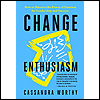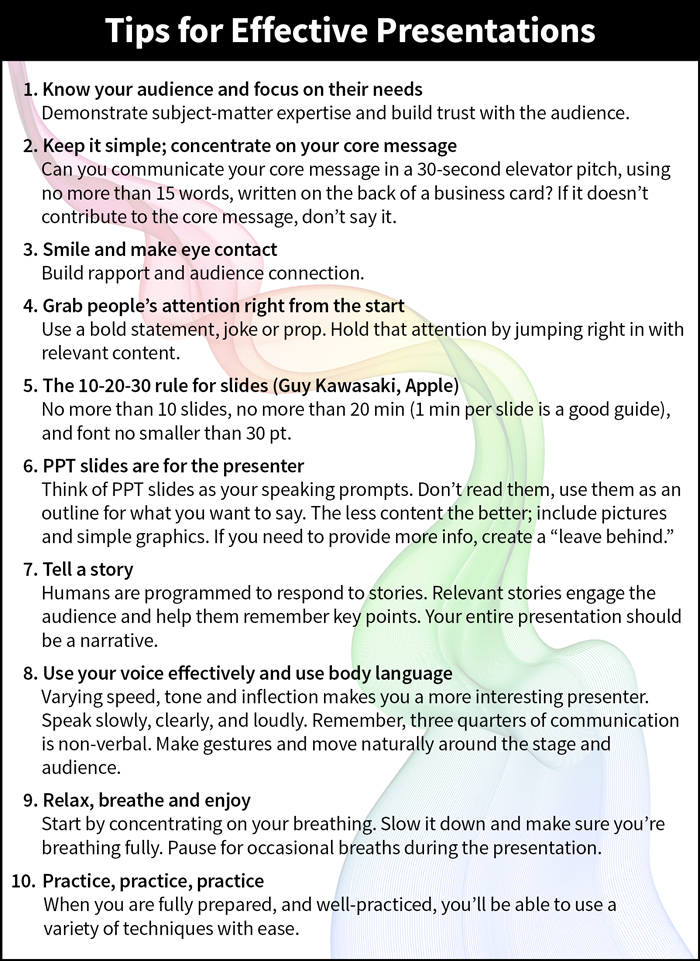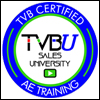
Resources to Sharpen Your Professional Skills
– Topics –
How to Be an Agent of Change | Time Management Tips | Four Ways to Avoid Burnout | Executive Presence | Persuasive Presentation Skills | Personal Branding VOD | Personal Financial Planning VOD | Strategies for Work-Life Balance VOD | Career Planning VOD | Harnessing Our Emotions VOD | Speak with Strength VOD
SkillUp: How to Be an Agent of Change
We’re entering a new year with significant changes on the horizon for the local broadcast tv industry, now more than ever, it’s important to not only embrace change but lead change. Becoming an agent of change is one of the most empowering moves you can make, not only for yourself, but for the industry and world at large. Position yourself as a forward-thinker, share your ideas, and ask your colleagues for theirs, and most importantly welcome the opportunities that come through innovation.
How can you be the one driving innovation, inspiring others, and carving your path to success rather than reacting to changes after the fact?
Here are four strategies that will help you become an agent of change in your workplace.
1. See Change as Opportunity
While it’s natural to feel anxious about uncertainty, those who succeed are those who approach change with curiosity and excitement. Instead of fearing disruption, ask yourself how you can leverage it?
When you approach change with an open mind, you’ll uncover new ways to advance your career, develop new skills, and elevate your team.
2. Stay Informed and Involved
To be an agent of change, you need to stay adaptable and continuously upskill. Familiarize yourself with emerging trends and technologies. Attend webinars and conferences, read new research, gain industry certifications, and utilize AI. The more informed you are about the state of the industry, the more you’ll grow in your career and the better equipped you’ll be to anticipate changes and offer innovative solutions.
3. Embrace Diversity and Encourage Others
Advocating for inclusivity in decision-making, hiring practices, and leadership roles will ensure that your workplace is not only adapting to industry changes but driving them.
Diversity of perspective and thought drives innovation, and your experiences and viewpoints can offer creative solutions to longstanding challenges. Don’t be afraid to voice your ideas and ask your colleagues to share their unique perspectives. By sharing your views, and encouraging others to do so, you open up a world of opportunity.
Change can’t happen if you sit on the sidelines. If you see opportunities for improvement—whether it’s in the way work is processed, the use of technology, or the culture of the organization—don’t wait for someone else to act. Step up, share your insights, and champion the changes that will make a difference.
4. Plan for the Future
Change is a process, not an event. It’s easy to get discouraged when things don’t shift immediately, but true agents of change remain persistent. Stay committed to your vision, continue to advocate for the changes you believe in, and celebrate the small victories along the way.
In leadership roles or in your personal career journey, patience, resilience, and a willingness to adapt are key. When you keep pushing forward, others will take notice. Over time, you’ll become recognized as someone who can drive meaningful change and innovate in ways that benefit everyone.
Resources:
 Change Enthusiasm: How to Harness the Power of Emotion for Leadership and Success
Change Enthusiasm: How to Harness the Power of Emotion for Leadership and Success
 How to Change Your Workplace | Work Life with Adam Grant
How to Change Your Workplace | Work Life with Adam Grant
SkillUp: Time Management Tips
8 Essential Time Management Tips to Jumpstart Your Career
With end of the year deadlines, holiday PTO, and New Year’s Resolutions on the horizon, now is a good time to focus on time management skills. By prioritizing tasks, creating to-do lists and managing your workflow you can crush your deadlines, reduce stress and have time to focus on your future goals!
Here are eight methods of time management to help you get results:
1. Track Short and Long-Term Deadlines
Sometimes we can lose sight of the bigger picture when focusing on smaller tasks. Start by creating a roadmap of clear, measurable long-term goals so you can align your daily tasks with your career vision.
Start by jotting down all your deadlines in a clear chart, on a calendar, or even on a sheet of paper and divide them into categories: Long term, short term, and immediate.
By periodically reviewing these short-term and long-term goals as you tackle your deadlines you can make sure you’re adapting and adjusting your strategies to get where you want to be!
2. Create To-Do Lists
Effective to-do lists are your best friends in time management. They help you prioritize tasks and budget your time wisely. Make sure to keep your lists updated to avoid procrastination and ensure you’re always on track.
3. Utilize Time Management Hacks
When it comes to your daily schedule, try utilizing a time management hack, like the Pomodoro Technique, where you focus on a task for 25 minutes followed by a five minute break. By breaking up tasks into smaller chunks, and giving yourself a small break, you won’t burn yourself out. Remember, it’s a marathon and not a sprint!
When it comes to deciding what task to work on, you can utilize something like the Eisenhower Matrix to determine what order to tackle your to do list. It can be overwhelming to decide what task you need to do first, and by having a consistent method to determine importance you can save time and dive into the right task at the right time.
4. Manage Interruptions and Say “No”
To stay focused, minimize interruptions by shutting off alerts and using breaks to catch up on emails or texts. Don’t hesitate to decline tasks that aren’t essential or can be delegated.
5. Avoid Multitasking
Switching between tasks can waste time and reduce overall productivity. Focus on one task at a time to maximize efficiency and output.
6. Create a Budget For Your Time
Many of us track our finances by listing out what we’ve spent for the month, broken down into category. Try doing the same thing with your time. You might be surprised that an unexpected task is taking up more time than it should.
Is there a client or prospect that you’ve been hesitating to reach out to? A webinar you’ve been meaning to watch? Or a certification you’ve been wanting to get? Once you realize how your time is being spent, or not spent, you can make room for these vital goals that can fall by the wayside.
When budgeting your time, be honest about how long tasks will actually take. Underestimating time can lead to stress and missed deadlines, while overestimating can waste valuable time.
7. Know Your Limits
Prevent burnout by avoiding overscheduling. Ensure you allocate time for rest, exercise, fun, and maintaining a healthy diet. You can send yourself a calendar invite for these necessities, so the time is carved out.
8: Work Smarter Not Harder
Technology has advanced leaps and bounds over the course of the past two years. Don’t be afraid to use time management software and AI resources so you can stay ahead of the curve and up-to-date on the latest technological innovations.
Resources:
 Time Management Strategies for Busy Women Entrepreneurs
Time Management Strategies for Busy Women Entrepreneurs
 Productivity and the Hard Truth About Time Management
Productivity and the Hard Truth About Time Management
SkillUp: 4 Ways to Avoid Burnout
Recently we asked our NEXT Women community how they avoid burnout. You spoke and we listened. Below we share your top ways for taking care of yourself, along with key resources to help you be your best!
1. Maintain Work / Life Balance
- Create Your Ideal Work Life Balance: Watch Skill Up: Strategies for Work/Life Balance with Sarah Syversen, LCPC, Career Counselor and Assistant Professor of Instruction and speakers Melissa Sheehan, Chief Revenue Officer, AdCellerant and Michelle Woods, Director of Sales, KIRO-TV, Cox Media Group.
- Healthy Exercise & Eating Habits: Whether working from the office, or home, keeping a consistent exercise routine has been shown to help.
- Model Boundaries: It starts from the top, when managing a team try to model healthy behavior for your employees. If it’s after hours, can that email wait until the morning?
2. Don’t Be Afraid to Delegate
- Learn About Your Team: An important skill is knowing which task is best for which person. As a manager, you and your team will be more efficient if you share the work load!
- No One Can Do it Alone: By fostering a healthy relationship with your boss or direct report, and learning how to delegate effectively, you can ensure that no one person is carrying the team.
3. Take Time Off
- Use Your PTO: A majority of Americans don’t use all their available vacation days. Don’t wait until you’re burnt out to take time for yourself.
- Be Present by Getting Away: By taking your PTO you ensure that when you’re in the office, you’re giving your full attention.
4. Set Boundaries
- Know Your Limits: Knowing your limits can help you maintain a consistent quality of work without sacrificing the good things in life. As an employee, don’t be afraid to let your team know when the workload has become overwhelming. The best employees can solve a problem before it even starts!
- Regulate Emotions: Watch SkillUp: Harnessing Our Emotions with Emma Miele, MA, PCC; Founder & Coach, The Breathing Room.

Resources:
 Atomic Habits: An Easy and Proven Way To Build Good Habits and Break Bad Ones
Atomic Habits: An Easy and Proven Way To Build Good Habits and Break Bad Ones
This breakthrough book from James Clear is the most comprehensive guide on how to change your habits and get 1% better every day.
 Burnout: The Secret to Unlocking the Stress Cycle
Burnout: The Secret to Unlocking the Stress Cycle
This groundbreaking book explains why women experience burnout differently than men—and provides a simple, science-based plan to help women minimize stress, manage emotions, and live a more joyful life.
Burnout is Everyone’s Problem
Burnout seems to be everywhere. But it’s not inevitable. Come inside some high-pressure workplaces that have figured out how to fight exhaustion by redesigning jobs and changing cultures.
SkillUp: Executive Presence
Developing a positive professional presence is essential for fostering relationship-building that could lead to opportunities, collaboration, and advancement.
Executive presence is the demonstration of respect, confidence, integrity, and empathy in accordance with professional standards, guidelines, and ethical codes.
You can cultivate executive presence by skill-building in 4 main areas:
1. Gravitas
- Show grace under fire: The ability to handle adversity, navigate crises smoothly and rebound quickly after admitting mistakes.
- Be decisive: Know and communicate what you want without being authoritarian or aggressive; enhance negotiation skills.
- Speak your truth: Be aware of your views and values and communicate them in your work and to others; give honest and constructive feedback.
- Be authentic: Your personal brand should align with your personality and values.
2. Emotional Intelligence
- Build your EQ: Emotional intelligence is understanding and managing your emotions and recognizing the emotions of others.

- Increase self-awareness: Understand your strengths, weaknesses, and emotions and how you react in stressful situations. Shift from being reactive to responsive (take time to prepare for an intentional response).
- Be socially aware: Read the room and recognize the dynamics and emotions present. Strive to understand your colleagues’ feelings and practice empathy. This builds the foundation for good communication skills.
- Manage relationships: Notice how you influence, coach, and mentor others as well as your conflict resolution skills.
3. Communication
- Speak with conviction: We’re drawn to great orators. Speak clearly with passion and ease. How we speak is often seen as more persuasive than what we’re actually saying.
- Command the room: Practice great storytelling with anecdotes, small talk, and humor.
4. Appearance
- Body language: Make direct eye contact, face your audience, keep your body positioning open and relaxed. Being comfortable in your own skin will translate into your non-verbal cues.

Resources
 How to Develop and Master Executive Presence
How to Develop and Master Executive Presence
Have you ever wondered why one person with the same skills and qualifications gets promoted over another? Leadership presence isn’t an innate quality that you either have or not. Instead, it is a skill—a set of learned behaviors that enable you to command attention.
 10 Tips for Building a Stronger Executive Presence
10 Tips for Building a Stronger Executive Presence
Nowadays, we prefer our leaders to be calm, confident, and steady. We still want them to be authoritative, but we also need them to be approachable, smooth and inspiring.
 What Defines Good Professional Presence?
What Defines Good Professional Presence?
No matter what industry you’re in, good professional presence can open the door to new opportunities and pave the way for raises and promotions.
 Why Emotional Intelligence is Important in Leadership
Why Emotional Intelligence is Important in Leadership
If you aspire to be in a leadership role, there’s an emotional element you need to consider. It’s what helps you successfully coach teams, manage stress, deliver feedback, and collaborate with others.
SkillUp: Persuasive Presentation Skills
Effective presentation skills help you connect, communicate, engage and persuade others. They give you a significant advantage when presenting your thoughts and ideas to colleagues and clients. We’ve compiled content with actionable steps for creating and presenting innovative and engaging presentations to help you captivate your audience.
Videos
The Secret Structure of Great Talks | 17 min run time
From the “I have a dream” speech to Steve Jobs’ iPhone launch, many great talks have a common structure that helps their message resonate with listeners. In this talk, presentation expert Nancy Duarte shares practical lessons on how to make a powerful call-to-action.
How to Give a Great Presentation: 7 Skills and Tips to Leave an Impression | 7 min run time
Dana Blouin is an entrepreneur currently living in Bangkok, Thailand where he is the co-founder and CEO of Mango Labs, a tech startup that is building a new quantified-self platform. Over the past two years, Dana has given hundreds of presentations and talks all over the world. These are the top 7 tips he has put together based on his experiences.
10 Presentation Ideas That Will Radically Improve Your Presentation Skills | 9 min runtime
Did you know that 83% of human learning is done visually? The more you can visually stimulate your audience, the better! A good presentation needs to be engaging, memorable, and impactful. Vanessa Van Edwards, founder of Science of People, has given hundreds of presentations; here are 10 presentation tips to make your meeting, keynote, workshop, or demonstration *spark*.

Resources
How to Give a Good Presentation: 8 tips
Public speaking and presenting isn’t everyone’s forte, but it’s a valuable skill, regardless of your job. If you want your voice to be heard, you’ll need to master communicating your thoughts and opinions simply and politely.
Best Practices For Virtual Presentations: 15 Expert Tips That Work For Everyone
With in-person presentations, you more or less have a captive audience. But with virtual presentations, your audience has a greater opportunity to stray. You now have to compete for their eyes, ears, hearts, and minds against diminished attention spans, increased home and work life distractions, and conflicting priorities.
15 Actionable Storytelling Tips for PowerPoint Presentations
Great storytellers do two things very well. First (obviously), they tell stories. Second, through their stories, they get people to act. You might be thinking, “That’s great if you’re Steve Jobs and introducing the iPhone, but what do I do with all my everyday content? Here are 15 insanely actionable storytelling tips and tricks for all types of content.
19 Quotes That Will Inspire You To Create An Amazing Presentation
Stuck in PowerPoint purgatory? Start with this great advice.
8 Reasons Why You Should Learn Presentation Skills
Clear presentation is vital if you are in an interview for a new job, but it is an equally big deal if you aim for a new position at your current workplace. Wherever you go, whatever you do, you should always find new ways to improve your presentation skills.



